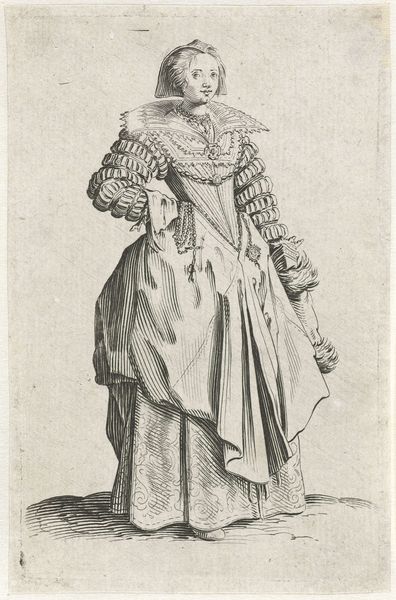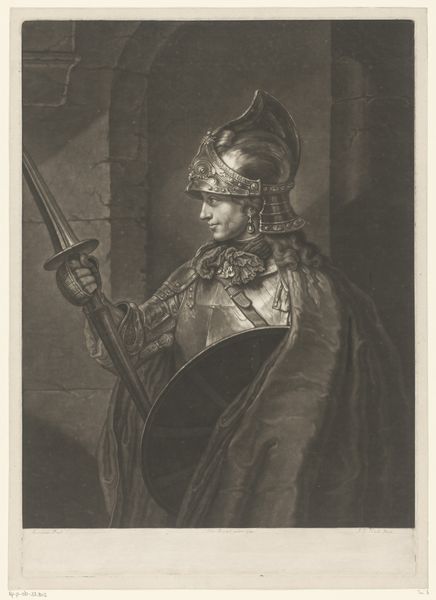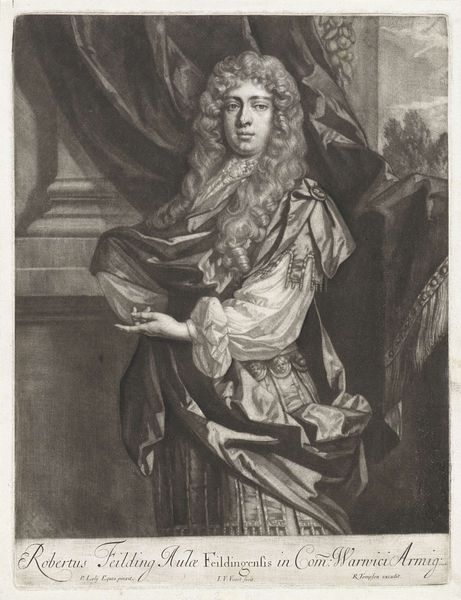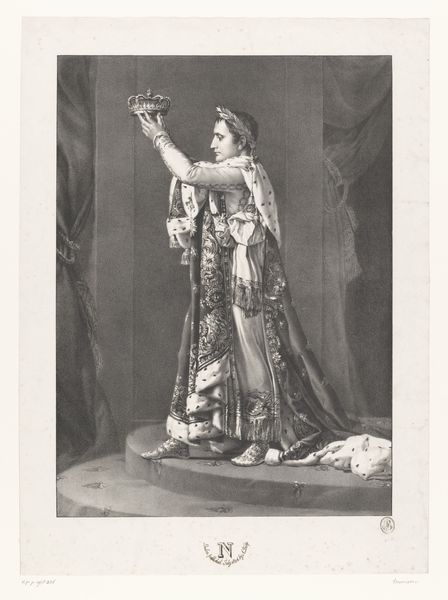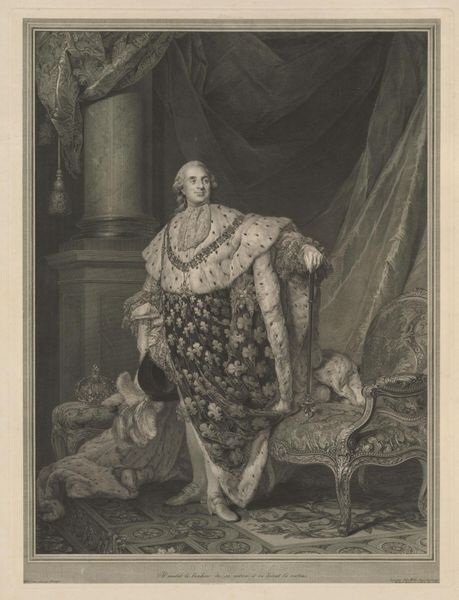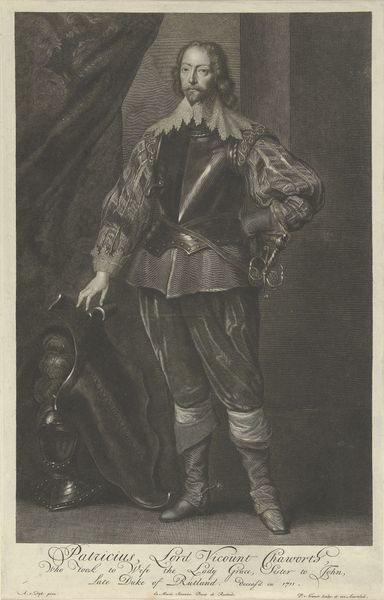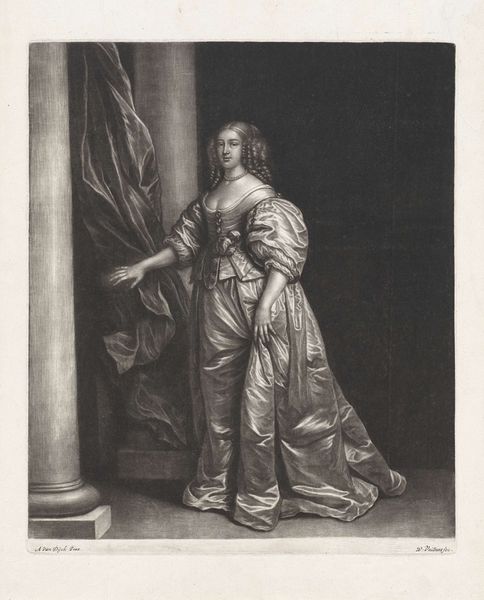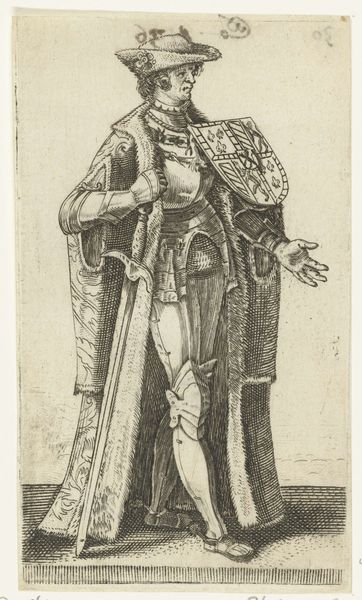
drawing, engraving
#
portrait
#
drawing
#
baroque
#
charcoal drawing
#
pencil drawing
#
history-painting
#
engraving
Dimensions: height 431 mm, width 264 mm
Copyright: Rijks Museum: Open Domain
This is David Loggan’s portrait of King James II of England, made using engraving, a printmaking process that was meticulous work. Loggan used a tool called a burin to carve lines directly into a copper plate. The incised lines hold ink, and when pressed onto paper, they create a raised image. Notice the incredible detail: the lace collar, the heavy folds of the king's robe, and the ornate carving on the door frame behind him. Each of these textures required a different approach to the engraving tool, and a deep understanding of the material properties of both copper and paper. Engraving in this period was not just about artistic expression, but also about communicating power. This portrait would have been reproduced and distributed widely, and intended to project an image of authority and refinement. The labor-intensive process of engraving itself underscores the wealth and status of the sitter, a visual testament to the social hierarchy of the time. Looking at the techniques and materials, we can understand how this print bridges the worlds of craft and fine art, reflecting the complex social and political landscape of 17th-century England.
Comments
No comments
Be the first to comment and join the conversation on the ultimate creative platform.
